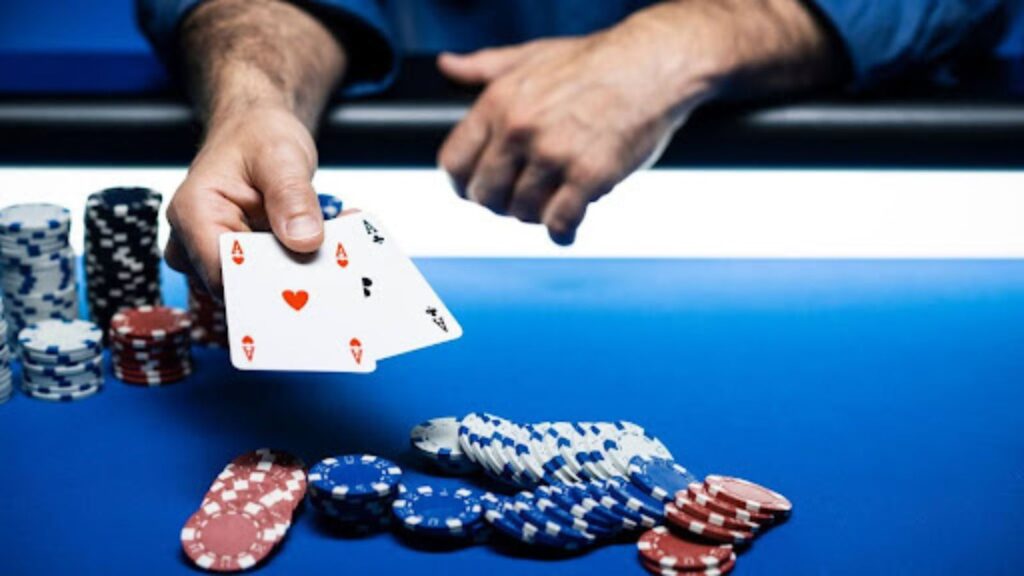Live tournament poker saw a dramatic return to prominence in 2022 by smashing guarantees and fueling record-setting participation across several marquee events. The WPT Main Tour had its busiest year yet. The Seminole Hard Rock Lucky Hearts Poker Open, with its $3,500 buy-in, managed to attract over 800 entrants while generating a prize pool far surpassing its guaranteed $2 million before Day 1 even wrapped up.
Meanwhile, the Wynn Millions series in Las Vegas further cemented the year’s resurgence. They offered over $12 million in guaranteed prize pools. The $10,000 buy-in headliner guaranteed $10 million and was a cornerstone of a packed live poker schedule. As the poker world re-emerged from pandemic-related restrictions, enthusiasm for live events soared beyond expectations.
A Surge in Prestigious Events
The calendar in 2022 brought an extraordinary lineup of high-profile tournaments. Events like the WPT Seminole Hard Rock Lucky Hearts Poker Open shattered participation expectations, signaling renewed enthusiasm among players. Meanwhile, the debut of the WPT World Championship at Wynn Las Vegas gathered nearly 3,000 entrants and became one of the year’s standout moments alongside milestones such as the 2022 WSOP.
These tournaments highlighted the pent-up demand for live poker and underscored the importance of well-structured stops. Players flocked to proven venues and revived the vibrant schedules of poker’s top tours. The influx of players from online poker platforms also contributed to these massive turnouts, ensuring that major stops continued to thrive.
New Faces and Old Favorites
First-time poker players surged during the pandemic. Some of those players, notably recreational ones, made their way to live poker tables in 2022. Many treated these events as vacation-like outings after long months of isolation. Others took advantage of cash saved during those quiet years to test their skills in larger fields than ever before.
Longtime pros also made their presence felt in this boom period. Eliot Hudon’s $4.1 million victory at the WPT World Championship and Jonathan Jaffe’s title in the WPT Alpha8 for One Drop High Roller came with prizes of over $1.5 million each.
For some, the steady influx of new players presented softer fields at lower stakes. Many pros noted that live games at these levels were reminiscent of online poker a decade ago and required less technical precision to succeed. This mix of experienced players and newcomers created dynamic games that rewarded strategic adaptability.
The Online Decline: Is Live Poker to Blame?
Online poker platforms experienced a noticeable downturn as live poker roared back. The trend was particularly visible in places like New Jersey, where online poker revenue dropped to $27.4 million, a decline of 8.5% from 2021. The sharpest drop came in July, with revenues plummeting 25.9% compared to the same month the previous year.

Some debate arose around the cause of this decline. Traditionalists argued that live poker had stolen players’ attention because it allowed for face-to-face interaction. Others countered that the rapid pace of online play, running four to five times faster than live games, started to lose appeal as players gradually prioritized social dynamics over volume.
There’s also the question of whether live poker schedules could saturate the market. Critics speculated that too many overlapping events might threaten the turnout in less-established stops. Tournament organizers will have to manage this carefully in future years to maintain a healthy balance between live and online offerings.
Big Numbers in High Roller Events
High roller events continued to thrive and showcase poker’s ability to attract affluent players willing to buy in at high stakes. The WPT Alpha8 for One Drop High Roller saw 45 entrants pony up $111,000 each, creating a $4,612,500 prize pool. Jonathan Jaffe emerged as the winner, earning $1,537,600.
Meanwhile, December’s WPT Everyone for One Drop event drew 1,676 players at a $10,500 buy-in, contributing to a prize pool exceeding $16 million. Bin Weng walked away with $2.2 million for his victory. This proves that the appetite for high-stakes competition remained intact even as recreational players dominated larger buy-in fields.
The Social Pull Brings Players Back
The return to live poker wasn’t driven by field sizes or prize pools alone. It was about the inherently social aspect of the game. After prolonged periods of isolation, players rushed back to events in 2022 for the camaraderie and face-to-face interactions that online platforms simply can’t replicate.
Proven venues with rich poker histories, like Seminole Hard Rock and Wynn Las Vegas, capitalized on this sentiment and hosted some of the largest events of the year. These tournaments delivered poker communities a chance to reunite. The rekindling of friendships, networking opportunities, and the sheer excitement of in-person competition became as significant as the prize pools themselves.
Conclusion
The resurgence of live tournament poker in 2022 proved that the game remains as strong as ever. Players of all skill levels embraced the thrill of in-person competition, creating record-breaking fields and staggering prize pools. While online poker saw a slight decline, live events thrived, drawing both seasoned professionals and new enthusiasts alike.

As the poker world moves forward, balancing online and live tournament schedules will be crucial in sustaining the industry’s momentum. The demand for live poker is unlikely to fade, as players continue seeking the social connections and immersive experiences that online platforms struggle to provide. With top-tier venues hosting prestigious events and an ever-growing pool of eager competitors, live tournament poker is poised for even greater success in the years to come.


More Stories
Smart Strategies to Upgrade Your Healthcare Office
Implementing BYOD in the Department of Defense: Challenges and Solutions
What Betting Teaches Users About Risk, Discipline, and Decision-Making